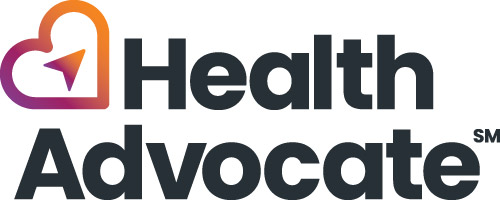
Looking for more information about your health screening results? You’ve come to the right place! We put together important facts about each screening to help you understand what your results mean for you.

Blood pressure is measured in two parts. The top number (systolic pressure) measures the pressure in your arteries when your heart beats, actively pushing blood out to the body. The bottom number (diastolic pressure) measures the pressure when your heart rests and fills with blood between beats.
A normal blood pressure is less than 120/80 mmHg (both numbers). Greater than 130/80 repeatedly is high blood pressure or hypertension. The chart below shows the current guidelines for blood pressure.
Blood Pressure
If blood pressure is high over many years, the heart works hard and it and the blood vessels are stressed. This stress and extra work can damage the heart and blood vessels. Left untreated, this can cause heart attacks, heart failure, strokes, blockages in various arteries (called cardiovascular disease), kidney disease, and other problems.
It is important to continue to have blood pressure checks regularly with your doctor and through workplace screening.
If your numbers are high, talk to your doctor about how to manage your blood pressure. Regular checks and healthy lifestyle measures are key, but many people need medication for best results. Each person is different, and depending on your individual situation and overall health, your doctor will advise you.
To learn more, please visit any of the websites below for more information about hypertension and tips to on blood pressure:

Cholesterol is a waxy, fat-like substance found in the cells of your body. While it is essential to body function, your body creates all it needs. Too much cholesterol contributes to blockages in the arteries (atherosclerosis), putting you at higher risk of cardiovascular disease.
High cholesterol is something to stay on top of through regular checkups with your doctor. It’s handled with changes in diet, exercise, stopping smoking, If you don’t, it‘s still good to check so that you know your numbers. High levels over time, especially when combined other issues, put you at risk for cardiovascular disease.
When your cholesterol is checked by a test called a lipid panel; there are several parts:
Low-density lipoprotein (LDL) or “bad” cholesterol: High levels of LDL cholesterol contribute to plaque formation in blood vessels, and so risk of cardiovascular problems.
LDL
High-density lipoprotein (HDL) or “good” cholesterol: HDL is known as “good” cholesterol because high levels may lower your risk since this type helps the body get rid of some of the LDL.
HDL
Triglycerides: A type of fat in your blood that your body uses for energy. The combination of high levels of triglycerides with low HDL cholesterol or high LDL cholesterol levels can increase your risk for heart attack and stroke.
Triglycerides
Total cholesterol: The total amount of cholesterol in your blood based on your HDL plus LDL, and 20% of your triglycerides.
Total cholesterol
TC/HDL Ratio: The total cholesterol divided by the HDL. A low ratio is good because it means that most of cholesterol measured is HDL (good cholesterol), instead of more being LDL (bad cholesterol).
TC/HDL Ratio
To learn more, please visit any of the websites below that provide additional information about cholesterol and tips to manage it:

Glucose is a sugar the main source of fuel for the cells of your body. The body digests foods in the form of carbohydrates to get glucose and the liver can make glucose to keep blood levels normal when we exercise or fast, out of stored energy called glycogen. The pancreas releases the hormone, insulin to push glucose from the blood into our cells.
High levels of blood glucose may occur if there isn’t enough insulin to get the glucose into the cells and/or our cells don’t respond correctly to insulin to absorb glucose.
A high blood sugar level can indicate either a risk factor for diabetes called prediabetes or diabetes; the exact diagnosis should be confirmed by a medical provider. If the glucose levels in the body are too high over time, diabetes is present, and many types of complications may occur, including damage to blood vessels, nerves, eyes, and kidneys.
Finding prediabetes before it progresses to diabetes is important to be able to prevent or delay progressing to diabetes by changing lifestyle factors and/or taking medication.
HbA1c (Glycosylated Hemoglobin)
This screening measures your average blood sugar levels over the past 3 months. When sugar enters your bloodstream, it attaches to hemoglobin, a protein in your red blood cells. Everybody has some sugar attached to their hemoglobin, but people with higher blood sugar levels have more. People who have already been diagnosed with diabetes use this test to monitor how well they are controlling their condition.
Glucose
To learn more, please visit any of the websites below that provide additional information about glucose and tips to manage it:

Body Fat Percentage
Body fat percentage is the percentage of the body that is composed of fat. Too much body fat increases your risk for diabetes, heart disease, inflammation and infection. Too little body fat is also bad because it may harm body functions. These are the ranges for normal body fat based on age and sex.
Body Fat
Body Mass Index (BMI)
BMI is a screening tool used to determine health risk in combination with other information, such as family history/ethnicity, activity, and nutrition. Both high and low BMI are associated with health issues.
Body Mass Index (BMI)
Waist Circumference
A high waist circumference can indicate too much abdominal fat, which increases your risk for type 2 diabetes, high cholesterol, hypertension and cardiovascular disease. Whether you are overweight or of average weight, measuring your waist size can help screen for possible health risks.
Waist Circumference
To learn more, please visit any of the websites below that provide additional information about body fat percentage, BMI and waist circumference:
Centers for Disease Control and Prevention – Body Mass Index


